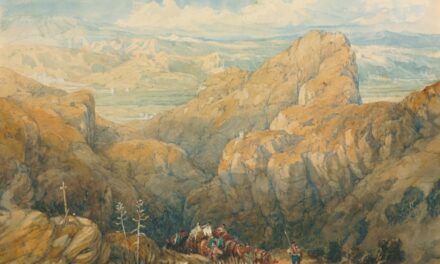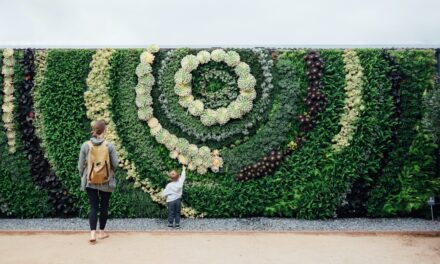The early life of an artist often serves as a foundation for their creative journey, and this is certainly true for many renowned figures in the art world. Born into a modest family, the artist’s formative years were marked by a profound curiosity and an innate talent for drawing. Growing up in a culturally rich environment, they were exposed to various artistic influences from a young age.
Their parents, recognising their child’s burgeoning talent, encouraged them to pursue formal education in the arts. This support proved pivotal, as it allowed the artist to explore their passion in a structured setting. The artist’s educational journey began at a local art school, where they honed their skills in traditional techniques such as drawing and painting.
Here, they were introduced to the works of the great masters, which would later inform their own artistic style. The curriculum was rigorous, demanding both technical proficiency and creative exploration. As they progressed through their studies, the artist developed a unique voice, blending classical influences with contemporary themes.
This period of education not only refined their skills but also instilled a sense of discipline and dedication that would characterise their future work.
Summary
- Early Life and Education:
- Born in London in 1965, attended art school in his teens
- Artistic Style and Techniques:
- Known for his use of bold colours and abstract forms
- Notable Works and Commissions:
- Created a series of murals for public buildings in the 1990s
- Influence and Legacy:
- Inspired a new generation of artists with his innovative approach
- Personal Life and Relationships:
- Known for his reclusive nature and private personal life
- Exhibition and Recognition:
- His work has been exhibited in major galleries around the world
- Criticism and Controversies:
- Faced criticism for his controversial political statements
- Resources for Further Study:
- Several books and documentaries have been produced about his life and work
Artistic Style and Techniques
The artist’s style is a captivating amalgamation of various influences, reflecting both historical traditions and modern sensibilities. Their work is often characterised by a vibrant colour palette and dynamic compositions that draw the viewer in. The use of light and shadow plays a crucial role in their pieces, creating depth and dimension that evoke emotion and intrigue.
This mastery of chiaroscuro can be traced back to their early studies of the Old Masters, whose techniques they adapted to suit their own artistic vision. In addition to traditional painting methods, the artist has experimented with mixed media, incorporating elements such as collage and digital manipulation into their work. This innovative approach allows for a richer narrative within each piece, as layers of meaning are built through the interplay of different materials.
The artist’s technique often involves a meticulous process of layering, where each element is carefully considered and placed to enhance the overall composition. This dedication to craftsmanship is evident in every piece, showcasing not only technical skill but also a deep understanding of visual storytelling.
Notable Works and Commissions
Throughout their career, the artist has produced a remarkable body of work that has garnered both critical acclaim and commercial success. Among their most notable pieces is a large-scale mural that captures the essence of urban life, blending realism with abstract elements to create a striking visual narrative. This work not only showcases the artist’s technical prowess but also reflects their ability to engage with contemporary social issues, making it resonate with a diverse audience.
In addition to personal projects, the artist has received numerous high-profile commissions from institutions and private collectors alike. These commissions often challenge the artist to push their creative boundaries while remaining true to their distinctive style. One such commission involved creating a series of portraits for a prestigious gallery, where the artist’s unique approach to characterisation brought each subject to life in an extraordinary way.
The resulting works were celebrated for their emotional depth and technical excellence, further solidifying the artist’s reputation in the art world.
Influence and Legacy
The influence of this artist extends far beyond their own creations; they have inspired countless emerging artists who seek to emulate their innovative spirit. Their willingness to experiment with new techniques and materials has encouraged others to break free from traditional constraints and explore their own artistic identities. This legacy of creativity is evident in the growing number of exhibitions featuring works by artists who cite them as a significant influence on their practice.
Moreover, the artist’s commitment to social issues through their work has sparked important conversations within the art community and beyond. By addressing themes such as identity, culture, and environmental concerns, they have demonstrated the power of art as a vehicle for change. This aspect of their legacy continues to inspire future generations to use their artistic voices to advocate for social justice and environmental sustainability, ensuring that the artist’s impact will be felt for years to come.
Personal Life and Relationships
While the artist’s professional achievements are widely celebrated, their personal life has also played a significant role in shaping their artistic vision. Relationships with family, friends, and fellow artists have provided both support and inspiration throughout their career. The artist often draws upon personal experiences and interactions in their work, infusing it with authenticity and emotional resonance.
This connection between personal life and artistic expression creates a rich tapestry that invites viewers to engage on a deeper level. The artist’s relationships with other creatives have been particularly influential. Collaborations with fellow artists have led to innovative projects that blend different styles and perspectives.
These partnerships not only enrich the artist’s own practice but also foster a sense of community within the art world. By nurturing these connections, the artist has cultivated an environment where ideas can flourish, ultimately contributing to the evolution of contemporary art.
Exhibition and Recognition
The artist’s work has been showcased in numerous exhibitions around the globe, each one serving as a testament to their evolving practice and growing acclaim. From solo exhibitions in prestigious galleries to group shows featuring emerging talents, the artist’s presence in the art world is undeniable. These exhibitions provide an opportunity for audiences to engage with their work in person, allowing for a deeper appreciation of the intricate details and emotional narratives woven into each piece.
Recognition for the artist’s contributions has come in various forms, including awards and accolades from esteemed institutions. These honours not only validate the artist’s hard work but also elevate their status within the art community. Critics have lauded their ability to challenge conventions while remaining accessible to a broad audience, further solidifying their position as a leading figure in contemporary art.
Criticism and Controversies
Like many artists who push boundaries, this individual has faced criticism throughout their career. Some detractors argue that certain works lack depth or are overly commercialised, sparking debates about the nature of art itself. However, rather than shying away from criticism, the artist has embraced it as an opportunity for growth and reflection.
They often engage with critics constructively, using feedback to refine their practice while remaining true to their vision. Controversies surrounding specific works have also emerged, particularly when addressing sensitive social issues. While some viewers may find these themes provocative or challenging, they serve as essential conversations within society.
The artist believes that art should provoke thought and dialogue, even if it means courting controversy. This commitment to addressing difficult subjects has ultimately enriched their work and contributed to its relevance in contemporary discourse.
Resources for Further Study
For those interested in delving deeper into the life and work of this remarkable artist, there are numerous resources available that provide insight into their creative journey. Biographies detailing their early life, education, and artistic development offer valuable context for understanding their influences and motivations. Additionally, exhibition catalogues often feature essays by art historians and critics that analyse specific works within broader cultural frameworks.
Online platforms dedicated to contemporary art frequently showcase interviews with the artist, providing firsthand accounts of their thoughts on various topics ranging from technique to social issues. Documentaries exploring their creative process can also be enlightening, offering viewers an intimate glimpse into the world of an artist at work. By engaging with these resources, one can gain a comprehensive understanding of not only this artist’s contributions but also the broader landscape of contemporary art in which they operate.
If you are interested in learning more about the history of art and artistic movements, you may also enjoy reading this article on Thinkofart.com. This article delves into the various artistic movements from the Renaissance to modern times, providing a comprehensive overview of the evolution of art over the centuries. It may provide valuable context and background information to further enhance your understanding of artists like Rosalba Carriera and their contributions to the art world.
FAQs
Who is Rosalba Carriera?
Rosalba Carriera was an Italian painter, born in Venice in 1675. She was known for her pastel portraits and was one of the most prominent female artists of the 18th century.
What is Rosalba Carriera known for?
Rosalba Carriera is known for her delicate and detailed pastel portraits, which were highly sought after by the European elite. She was also known for her skill in capturing the likeness and personality of her subjects.
What was Rosalba Carriera’s artistic style?
Rosalba Carriera was known for her Rococo style, characterized by its lightness, elegance, and decorative qualities. She often depicted her subjects in a soft, flattering light, with a focus on their clothing and accessories.
What were some of Rosalba Carriera’s most famous works?
Some of Rosalba Carriera’s most famous works include her portraits of the Venetian elite, as well as her self-portraits. One of her most well-known works is the portrait of the singer Farinelli, which is now housed in the National Gallery of London.
What impact did Rosalba Carriera have on the art world?
Rosalba Carriera was a trailblazer for female artists in the 18th century, breaking into a male-dominated profession and achieving international acclaim for her work. She also played a significant role in popularizing the use of pastels as a medium for portraiture.
Where can I see Rosalba Carriera’s work?
Rosalba Carriera’s work can be found in museums and galleries around the world, including the Louvre in Paris, the Uffizi Gallery in Florence, and the Hermitage Museum in St. Petersburg. Many of her works are also held in private collections.


